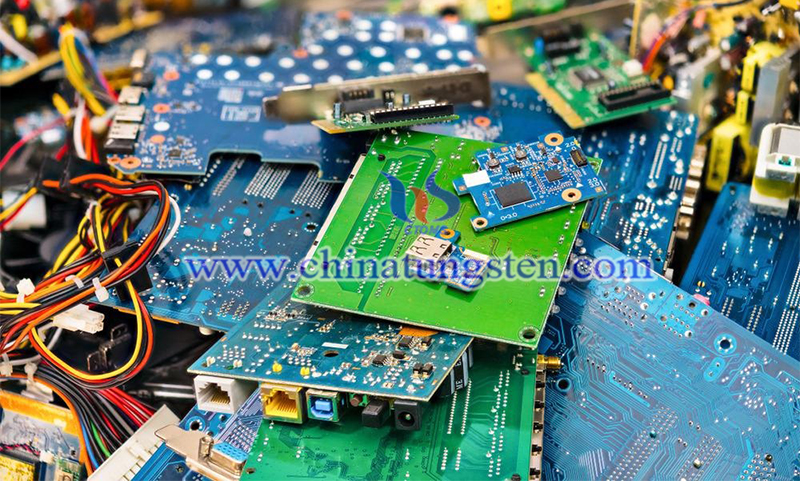Sustainable Recovery of Rare Earth Elements with Cellulose Nanocrystals
- Details
- Category: Tungsten's News
- Published on Thursday, 30 December 2021 23:12
Rare earth elements (REEs) have become an essential component of advanced industries. However, industry suffers from a shortage of REE materials, mainly due to the lack of effective recycling strategies associated with sustainable REE removal. Scientists have used nanotechnology to develop n cellulose nanocrystals, which can effectively recover REEs using a novel and sustainable method.
Besides being useful in traditional sectors, rare earth elements are useful metals in many futuristic industries, such as lasers, fluorescent lamps, atomic batteries, engine turbines, and super magnets.
At present, China is the leading supplier and exports above 70% of the world's REE supply. The ever-increasing demand for REE and limited resources have resulted in massive enhancement in its cost. This is the reason why many countries have regarded REEs as strategic resources.
Neodymium, an REE material, has been listed among the 50 minerals that the U.S. government designated to be critical to its national security. Researchers have pointed out that technological advancements have rapidly increased electronic waste (e-waste), such as old computers, printed circuit boards, televisions, and many other electronic devices.
These e-wastes, which are potentially toxic trash, have been piled all over the world and have become a major environmental threat. Some scientists have focussed on recycling e-waste, and they believe that this waste could become a source for many important and high-demand elements, including rare earth metals. Researchers have recently developed a technology to recover neodymium from e-waste trash worldwide.

A commonly used form of Nd3+ is Nd2Fe14B. As stated above, Nd is used in many industries, including wind turbines, computer hard drives, electric vehicle motors, loudspeakers, generators, and in-ear headphones. Amir Sheikhi, an assistant professor at the Pennsylvania State University, and his colleagues have developed an innovative method associated with extracting Nd from other substances, such as e-waste, with the help of cellulose.
Here, scientists have negatively charged the hairy nanoparticles to attract and bind with the positively charged neodymium ions (Nd3+. This binding results in nanoparticle-NB aggregation into larger pieces that can be easily recycled and reused.
AHNC technology consists of completely solubilized dicarboxylated cellulose (DCC) chains and cellulose nanocrystals (CNC). Compared to conventional CNC, the DCC hairs possess a greater charge density, i.e., approximately one order of magnitude higher than the CNC. In this technology, the polyanionic hairs can remove 264 milligrams of Nd3+ of the nano adsorbents within seconds.
To date, this removal technology has enabled the highest removal rate of Nd3+ with the shortest contact time, and the biorenewability of cellulose complements this approach.
Scientists have further indicated that the addition of complementary calcium ion-mediated colloidal bridging in AHNC technology further enhances its ability to remove Nd3+ from a liquid substrate. Besides significant removal of Nd3+ from e-waste, rare earth elements could also be extracted from unused mining tails, industrial wastewater, and e-waste in the future. Scientists are optimistic that this REE recycling technology will positively impact many different industries.
One of the important aspects of this technology is that it operates at a low cost. Sheikhi also observed that most of the methods available for recycling REE are not eco-friendly. Some of the conventional methods include solvent extraction, precipitation, ion exchange, electrochemical, etc. Most of these methods rely on hazardous chemicals and consume high energy. Additionally, some use highly acidic conditions to extract REE in chemical reactions.
The development of a novel, cost-effective, and environmentally friendly technology for the sustainable recovery of Nd would benefit many industries. Scientists are optimistic that the novel AHNC technology will allow the United States to compete with other giants like China, in recycling and independently producing rare earth elements.
- Rare Earth Manufacturer & Supplier, Chinatungsten Online: www.chinatungsten.com
- Tungsten News & Prices of China Tungsten Industry Association: www.ctia.com.cn
- Molybdenum News & Price: news.molybdenum.com.cn
- Tel.: 86 592 5129696; Fax: 86 592 5129797; Email: sales@chinatungsten.com



 sales@chinatungsten.com
sales@chinatungsten.com